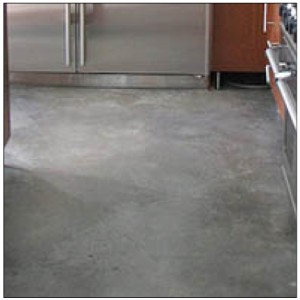
The fourth and final installment of our series on various types of flooring will cover less common materials.
Previous titles in the series were: Flooring – Hardwood, Flooring – Carpet and Flooring – Tile.
Traditional flooring needs to make way for some up-and-comers that are ever-increasing in popularity.
Cement, traditionally found outdoors and in industrial settings, is finding its way into more and more residential spaces. One obvious benefit to cement floors is the durability factor. Let’s face it. Unless a sledgehammer accidentally falls on it, it will practically last forever. Even then, repairs couldn’t be simpler.
It may be surprising, but cement floors carry their weight in an aesthetic sense as well. Stamping and stenciling patterns into the concrete to give it the appearance of stone, brick or other patterns transforms the grey slab into an attention-grabbing by-product. Not to mention that it’s available in an almost endless array of colors (currently more than 60). However, the plain grey slab is perfect for pulling off the urban, industrial look.
Those looking to keep it “green” have been flocking to bamboo flooring, which is a relatively new option. Bamboo’s ability to grow rapidly, paired with the fact it’s actually grass and not wood, makes it a much more sustainable alternative to hardwood flooring.
For the lovers all things decadence, marble flooring has been an elegant flooring option for ages. Marble enhances any room it is placed in and instantly provides a clean, proper feeling. Marble is available in tiles as well as large slabs, all depending on what the budget can handle.
Rubber flooring is no longer reserved for school gymnasiums. Try placing rubber flooring in your children’s playrooms and exercise rooms. Maintenance is a breeze.
Flooring options available are virtually endless and are limited only by the imagination (and budget) of the individual. Ditch the traditional, boring flooring and invigorate your home with a variety of colors and textures.
